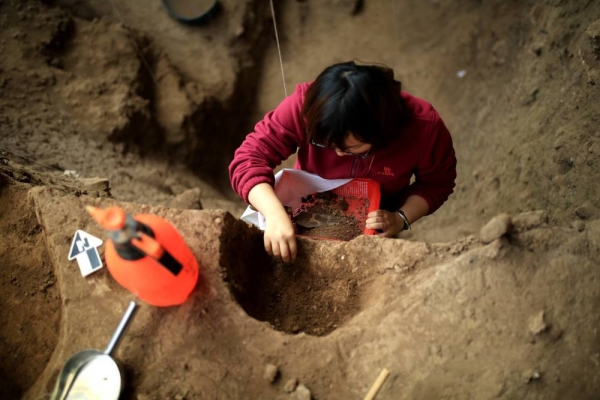Guizhou achieves breakthrough in Chuandong Cave archaeological excavation


New layers discovered in Chuandong Cave show that human activity in Puding county can be dated back to 55,000 years ago. [Photo/colorful Guizhou network]
Southwest China's Guizhou province recently announced an important breakthrough in the archaeological excavation at Chuandong Cave.
Based on optically stimulated luminescence dating and carbon-14 dating, new layers have been discovered beneath the previously excavated strata, pushing back the history of human activity in Puding county to 55,000 years ago.
Chuandong Cave is located around 5 kilometers southwest of Puding county in the city of Anshun and was discovered in 1978. Excavations were initially conducted in 1979, and then again in 1981 and 1982.
Over 10,000 stone tools, bone artifacts, animal fossils, and human fossils, more than 1,000 bone and antler artifacts, as well as two complete human skulls, were unearthed, the largest number of polished bone artifacts ever discovered in China at that time.
In 2022, the third archaeological excavation of Chuandong Cave started. In an excavation area of 40 square meters, more than 10,000 stone tools and over 2,500 bone and antler artifacts have been unearthed thus far.
Additionally, over 100,000 animal bones have been discovered. The site currently has the largest quantity and variety of polished bone artifacts in East Asia.
Moving forward, multidisciplinary scientific archaeological research, including physical anthropology, ancient DNA and ancient protein analysis, taphonomy, lithic technological-functional analysis, zooarchaeology, archaeobotany, and chronology, will be conducted based on the excavation and retrieval of artifacts from the past two years.







